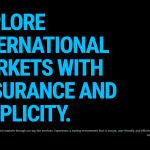
By Karen Meager, Monkey Puzzle Training
For many businesses, pandemic restrictions meant dealing with changes unprecedented in the history of modern working. Lockdowns presented an existential threat in some sectors, furlough kept some companies from collapsing, while others failed despite herculean efforts. For many, leadership suddenly became about managing a workforce at home in their slippers, which was glorious for some workers, but miserable for others.
Now that many people are returning to the office, we are seeing an explosion of pent-up grievances. These can be harder to spot and deal with from a leadership perspective. But rather than avoid these issues, leaders will need to become really good at facing up to hard conversations, to mediating, and, where necessary, to facilitating exits.
So, things have changed.
But business leaders were already navigating a course that had altered significantly in a decade.
The times they are a-changing
A 2012 Monkey Puzzle Training survey (of over 60 UK and European business leaders) set out to discover what kinds of people were in leadership roles and what they enjoyed and found challenging in those roles. The same survey was rerun in 2020.
Day-to-day experiences were much the same—managing time and dealing with difficult behaviour remained among the biggest challenges—but what had changed were the topics and expectations business leaders have to deal with. Now, along with strategic thinking and making business decisions, modern leaders are faced with managing mental health, wellbeing, psychological safety, diversity, and inclusion. There is an ever-growing list of expectations of leaders that is exhausting and (arguably) unrealistic for any single person; They are required to be strong yet vulnerable, provide both autonomy and protection, and to be clear and straightforward yet also understand complex nuances.
Possible burnout
Dealing with your own stress, the interpersonal issues of colleagues, and the already exhausting list of expectations leaves many leaders stuck struggling to meet new demands while still trying to master the essentials. It’s no surprise, then, that burnout rates in leadership are reaching alarming levels and many people are seeking less stressful roles.
But without good leaders, the world turns less smoothly. We need people who are able to find a balance between these qualities and expectations while managing to motivate and inspire people.
Rather than unrealistic attempts to manage absolutely everything perfectly, would it not be better (for everyone involved) to focus on what can be done to achieve the best (not perfect) leadership:
All things to all people won’t work
It’s unlikely you will ever be the leader everyone wants you to be, so let go of your perfectionist tendencies and get to know your limitations.
Often, leaders are told to iron out and expand their limitations. Yet, this will often leave you giving up developing your strengths by overextending yourself into a weakness. There’s simply not enough time to focus on both. Instead, it is usually possible to find ways around your limitations. If you’re not great at organisation, you can find support from a deputy, for example.
Start by finding your unique advantage ─ the place where the Venn diagram of strengths, business needs, and personal enjoyment overlap. Anything else, you can either work on improving or find someone else to plug the gaps.
Improvement
Once you know your unique strengths and values, and have identified your weak spots, identify and work on one area you would like to improve.
It is useful and important to use feedback to work on self-development. You may think that your organisation skills are weak but perhaps your team doesn’t need organising as much as they need attention to detail.
Elicit feedback from a variety of trusted sources and look for themes and perspectives on your behaviour. However, be wary of unsolicited feedback as there can often be an agenda attached.
Of course, getting honest and trustworthy feedback without it hitting all your hot buttons is difficult. People you manage are unlikely to give you particularly negative feedback, while those in senior management may be too far removed from the day-to-day.
A third-party training provider or a coach can be invaluable for this activity. They can gain honest feedback, filter out unhelpful content, and present key themes in a way that avoids hot buttons.
Realistic goals
Avoid setting any goals that your brain won’t accept. If it’s not relevant to you or your role or doesn’t fit your personality, this will make it impossible to achieve a goal. You should also try to avoid getting distracted by the ‘next big thing’ – fads fade but good leadership stands the test of time.
Once you have identified relevant and useful goals, begin practising them in a safe environment where you can risk getting them wrong. You may not be great at first, so when there isn’t a lot on the line; applying new strategic thinking skills to a multi-million-pound pitch is risky and could lead to a major setback. Instead, try applying it to your internal strategy first and get feedback from the wider team to help you improve.
Coach or mentor
Coaches and/or mentors can be an invaluable resource. Not only can they provide a different perspective, but they can also be a compassionate ear to express your own fears and frustrations.
The most important thing is to find someone who is qualified. Coaching is not a regulated profession, so look for someone who is registered with a professional body and has good training. Coaching is about combining experience with a specific skillset and not everyone is suited to it.
It may also be useful to ask whether they are appropriate to your profession. Needing to explain the context and industry to your coach can be a massive waste of time. So, some background technical knowledge can be extremely useful.
However, the absolute key thing to look for in a coach is someone with whom you feel like you could share your weaknesses and whom you trust. Needy, emotionally dysfunctional coaches are a nightmare as the work becomes more about keeping them happy than having your own needs met. Coaches aren’t there to be liked; coaches are there to help you improve.
Mentoring is often more specific to your job. Mentors are often found in your network and/or organisation (e.g., peer mentoring, swapping skills and experience). The benefit of mentors from your network or organisation is that it takes away hierarchy, making it work well for senior leaders or anyone under a strict NDA.
Boundaries
While leaders are expected to manage the (increasingly explicit) boundaries of colleagues, it is not always seen as okay to make a case for your own wellbeing. Leaders are expected to be ‘always on’ and available to both employees and senior management.
As such, it is important to get used to saying ‘no’ without saying ‘no’ – being unavailable without making a big deal about it. When the business is fast-paced and mission-led, your case for your own wellbeing can go unheard, but you can still manage it for yourself.
Start by defining your boundaries, perhaps committing to stepping away from your phone in the evenings, or making a promise to yourself not to work late at least two nights a week.
Once you have identified your own boundaries, stick to them. You don’t need to broadcast that you will be unavailable after seven o’clock, simply be unavailable. People will get used to these quiet boundaries without them being made explicit.
On the flip side, when you’re all in, be all in. Work hard, develop skills, overcome weaknesses, and find a style of leadership that emphasises your unique talents. Just don’t be a leader all the time. Make time for yourself so that you avoid burning out!












